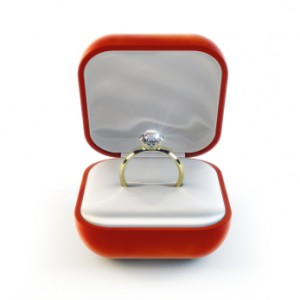Bling it on: Why you shouldn’t fight over valuables — and how to avoid the battle
 Division of assets during divorce can lead to some pretty nasty arguments. But when divorcing couples fight over “stuff”, whether it’s valuables or tchatchkes, it’s almost always a battle over intangibles. Memories, family associations, and ideals about love and marriage are at the heart of such arguments. In the confusion and turmoil of divorce, people will battle blindly to hold on to physical “anchors” they associate with emotions — even if it makes matters worse!
Division of assets during divorce can lead to some pretty nasty arguments. But when divorcing couples fight over “stuff”, whether it’s valuables or tchatchkes, it’s almost always a battle over intangibles. Memories, family associations, and ideals about love and marriage are at the heart of such arguments. In the confusion and turmoil of divorce, people will battle blindly to hold on to physical “anchors” they associate with emotions — even if it makes matters worse!
One way to avoid such arguments is to limit the number of things you are willing to fight over. Here’s a process to try (and if you can get your spouse to do the same, it will work even better):
1. Sit down and make a list of items you want to keep. Don’t evaluate why you want to keep them, or what their intrinsic or monetary value might be — just list them.
2. Put the list aside for 24 hours, then, go through it again. Look at each item on the list. Visualize it in your hands. Identify what emotions go with it. Does it make you happy or remind you of happy times with your spouse or someone else you care about? If so, write your feelings and memories down next to the object. If not, cross the object off your list. And if you want to keep an object solely because doing so would upset your spouse, cross it off your list IMMEDIATELY!
3. Once you’ve made this list, set it aside for another 24 hours. Then look at it again. Picture yourself in a small studio apartment with all of the objects on your list. Is the apartment crowded? If so, you’ve still got some weeding to do. Go through the objects one at a time, and picture your apartment without them. Would you miss them on a daily basis? Or would they sit in a drawer or on a shelf and only be noticed occasionally? Items you use daily or weekly get a star — these are the priority items for you. Anything else is optional — if your spouse wants them, let him or her have them.
4. If your spouse has done this too, the two of you now compare notes. Anything that’s on one list but not the other goes to the person who lists it. Objects on both lists that are starred by one person and not the other go to the person who prioritized them. Anything prioritized by both partners is subject to negotiation.
Negotiating over priority objects can get sticky too, but one way to handle it without resorting to name-calling or bickering is to present a “case” for what the object means. Remember step 2, where you identified the emotions related to the object? Share these with your spouse — or with a attorneys, if tensions with your spouse are too great to allow for calm interactions. “I want the engagement ring back,” the husband might say, “because it belonged to my grandmother. It’s the only thing of hers I have, and she gave it to me herself just before she died. It means a lot to me.” The wife may then reply, “But I want to keep the ring because it reminds me of how happy I was when we first got engaged, and I’m really attached to it.” Understanding your own emotions, as well as your spouse’s, can help bring you to a compromise — either one person will decide to “let go” of the emotional attachment (and the object), or an alternative arrangement can be developed (for example, one spouse keeps the ring for the time being, but agrees to give it to a son or daughter on a 21st birthday so that it can be passed down as a memento of the parents’ prior happiness).

